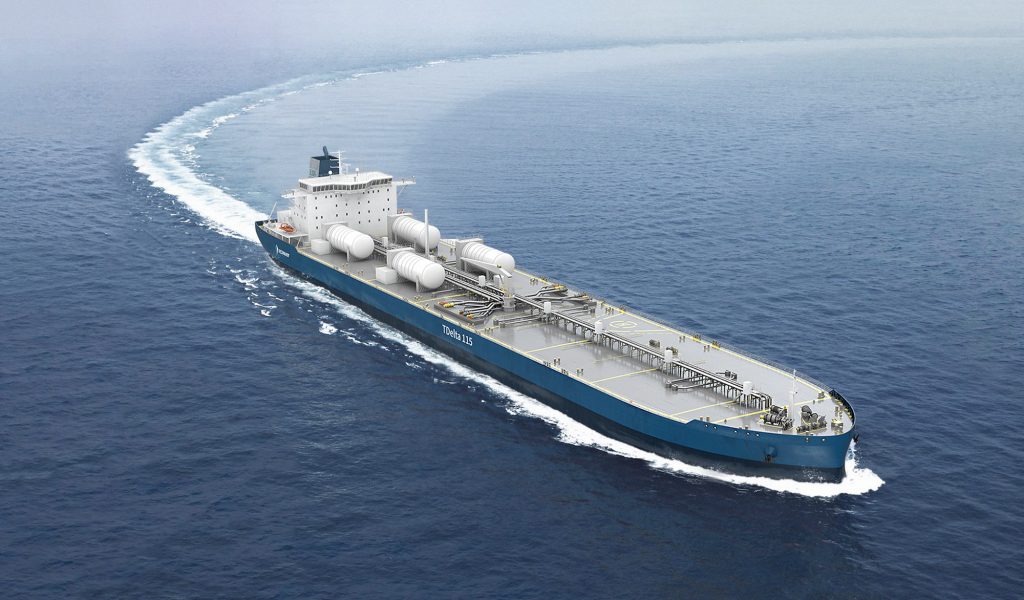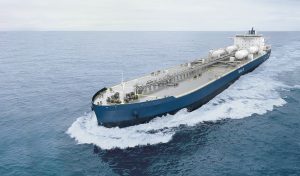Deltamarin’s design plays a crucial role in solving the shipping decarbonization puzzle

March 18, 2021 – Maritime industry decarbonisation is bringing along new legislation. In addition to the upcoming rules for EEXI and CII, there is a growing interest among ship owners and operators to understand the true well-to-wake emissions of the newbuilds.
It is also important to gain control of the total cost of both today’s and future choices of fuels and technologies in the projects. Shipping decarbonisation is technically a combination of smart operations, innovative, efficient ship design and low-carbon fuels. Deltamarin’s new design tools enable ship owners and operators to gain control of all these.
Deltamarin partnered recently with DNV, Total and Minerva Marine to perform a joint industry project (JIP) regarding various fuel alternatives with two different tankers as case ships. The project was conducted during 2020 and included the assessment of different options for shipping decarbonisation with respect to the design of vessels, financial issues and environmental performance – both on well-to-wake and tank-to-wake bases. The case vessels in the project were Deltamarin’s new design, but the operation profile was based on measurements from an existing, modern tanker fleet of similar size.
You can find a summary report in DNV:s pages at this link. At the end of the article, we have also produced a summarising presentation of the main results of the project.
The JIP is part of Deltamarin’s continuous development activities in the field of making decarbonisation a reality for our customers. Even if the focus of the JIP was in comparing various fuel and certain technology alternatives with each other, it enabled us to evaluate the role of good fuel-efficient ship design in a decarbonisation context. The project also enhanced our understanding of the importance of having real data available for the analyses. There are many alternative paths for carbon-neutral or zero-emission maritime industry, and the best solutions are found together, utilising our experience and smart design processes for the actual work. Innovations are made by ensuring the compatibility of the tailor-made concept with the business case, taking the total cost of ownership into account.
Please follow the case stories of applying our new design tools to real decarbonisation problems in our blog and don’t hesitate to contact us for more details regarding this topic!
About Deltamarin
Deltamarin Group provides ship design, offshore engineering, and construction support for the marine and offshore industries worldwide. The services include the full range of consulting, design, and engineering as well as procurement, support for construction and installation. The Group employs around 400 experts in its own and associated companies located in Europe and Asia. Deltamarin is part of China Merchants Group. www.deltamarin.com
About DNV
DNV is the independent expert in risk management and quality assurance. Driven by our purpose of safeguarding life, property and the environment, they empower their customers and their stakeholders with facts and reliable insights so that critical decisions can be made with confidence. As a trusted voice for many of the world’s most successful organisations, DNV uses their knowledge to advance safety and performance, set industry benchmarks, and inspire and invent solutions to tackle global transformations.
DNV in the maritime industry: DNV is the world’s leading classification society and a recognised advisor for the maritime industry. DNV enhances safety, quality, energy efficiency and the environmental performance of the global shipping industry – across all vessel types and offshore structures. DNV invest heavily in research and development to find solutions, together with the industry, that address strategic, operational or regulatory challenges. For more information visit: www.dnv.com/maritime
About Minerva Marine Inc.
Minerva Marine Inc. is a leading global provider of maritime transportation services, specializing in the safe and efficient transport of liquid bulk cargoes. With a commitment to excellence, sustainability, and innovation, Minerva Marine has established itself as a trusted partner in the shipping industry. www.minervamarine.com
For more information, please contact


